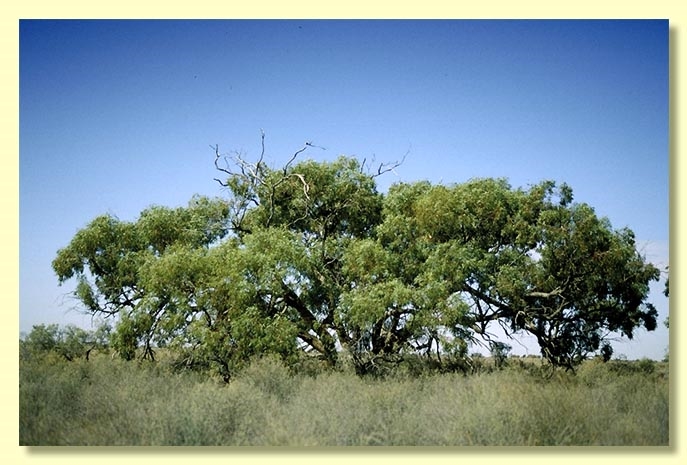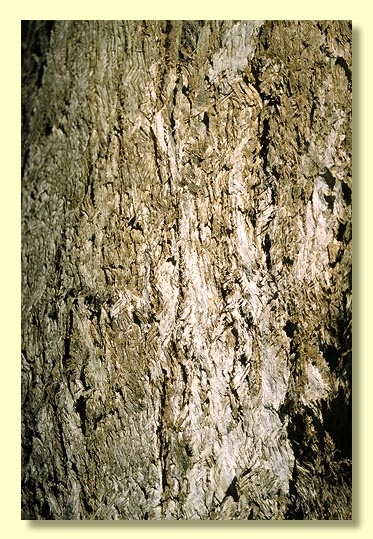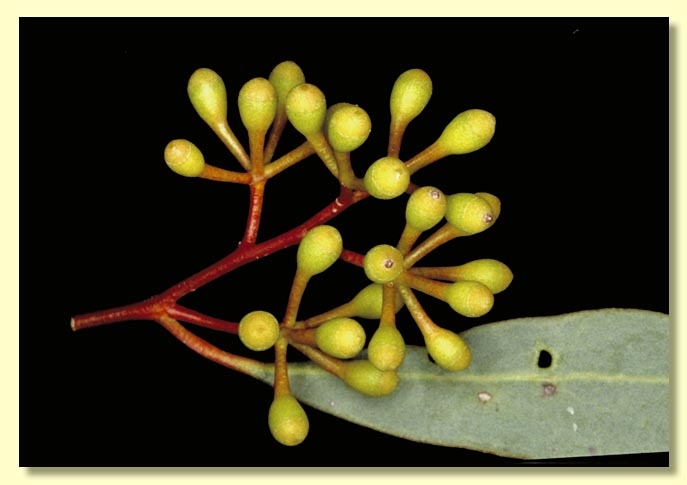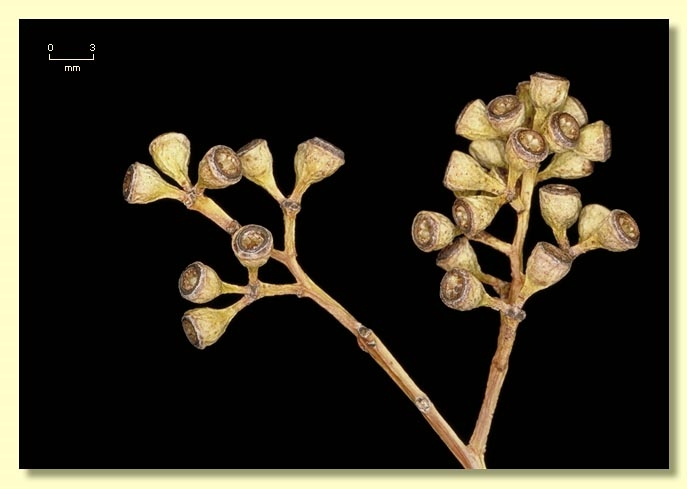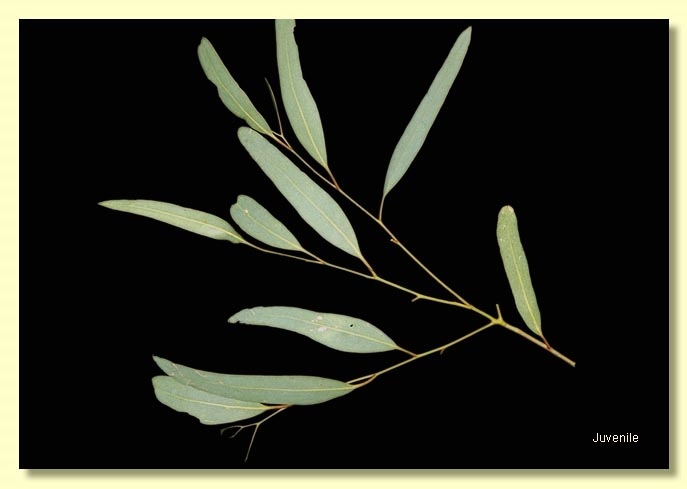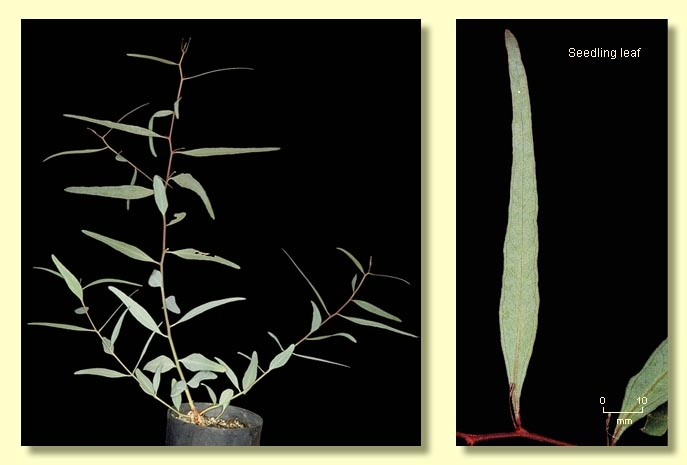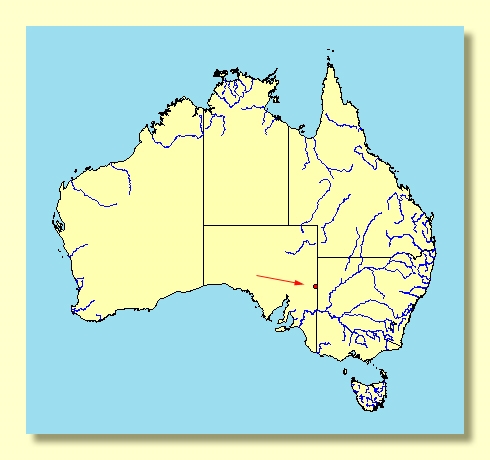Euclid - Online edition
Eucalyptus sp. Cockburn
Eucalyptus | Symphyomyrtus | Adnataria | Apicales | Buxeales | Amissae
This undescribed taxon was referred to as Eucalyptus aff. largiflorens in earlier editions of EUCLID.
Spreading tree to 7 m tall. Forming a lignotuber.
Bark rough over trunk and extending to small branches, grey to dark grey, box-type.
Juvenile growth (coppice or wild seedling to 50 cm tall): stems rounded to square in cross-section; juvenile leaves always petiolate, alternate, linear to narrowly lanceolate, 7–16 cm long, 0.5–1.5 cm wide, greyish green, dull.
Adult leaves alternate, petioles 0.5–1.2 cm long; blade lanceolate, 7–11 cm long, 1–1.5 cm wide, base tapering to petiole, margin entire, apex pointed, concolorous, glossy, mid-green, side-veins acute, reticulation dense, intramarginal vein remote from margin, oil glands scattered, intersectional, or obscure.
Inflorescence terminal compound with some umbels in upper axils, peduncles 0.3–0.6 cm long, buds (?3)7 per umbel, pedicels 0.1–0.2 cm long. Mature buds obovoid to ovoid, 0.2–0.3 cm long, 0.2–0.3 cm wide, scar present (outer operculum shed early), operculum obtusely conical to rounded, stamens inflexed, all fertile or in some plants the outer filaments without anthers or the anthers poorly developed (staminodes), inner filaments with ± cuboid anthers, adnate, basifixed, dehiscing by sub-terminal pores, style long and straight, stigma blunt, locules 4, the placentae each with 4 vertical rows of ovules. Flowers white.
Fruit pedicellate (pedicels 0.1–0.2 cm long), cupular, 0.3–0.5 cm long, 0.2–0.5 cm wide, disc usually descending, valves 4, enclosed or near rim level.
Seeds brown, 0.8–1.5 mm long, flattened-ovoid, dorsal surface shallowly reticulate, hilum ventral.
Cultivated seedlings (measured at node 10): cotyledons reniform; stems rounded to square in cross-section, slightly glaucous or non-glaucous; leaves always shortly petiolate, opposite for 6 or 7 nodes then alternate, linear, (7)9–16 cm long, 0.4–1 cm wide, dull, grey-green (non-glaucous).
Flowering has been recorded in October and November.
Eucalyptus sp. Cockburn is best placed in Eucalyptus subgenus Symphyomyrtus section Adnataria (the boxes) because the buds have two opercula, ovules are in four rows, seeds are flattened-ovoid, cotyledons are reniform, and anthers are rigid on the staminal filaments. Within section Adnataria, E. sp. Cockburn is part of a subgroup, series Buxeales, further distinguished by terminal inflorescences and buds that lose the outer operculum early in development. It is a bit different from other members of this group because of its regularly inflexed stamens, outer filaments sometimes without anthers (staminodes) and glossy adult leaves.
The relationship between Eucalyptus sp. Cockburn and the well-known Black Box, E. largiflorens, which occupies floodplain habitat adjacent to streams in the riverine plain areas of South Australia, Victoria, New South Wales and south-eastern Queensland, needs investigating.

